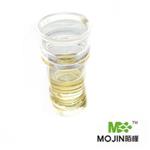Scientific opinion on the safety assessment of (Perfluorobutyl)ethylene for use in food contact materials
Jan 30,2024
ABSTRACT
The Food Standards Agency, United Kingdom, requested for evaluation of the monomer (perfluorobutyl)ethylene (PFBE) with the CAS number 19430-93-4 and the European Commission reference number (REF. No.) 22931, for use as a co-monomer up to 0.09% w/w in the production of polytetrafluoroethylene (PTFE) polymers processed at high temperature. A normal part of the fabrication process involves sintering, that is baking at high temperature, typically 380°C for at least an hour but in the case of coatings or thin articles up to 430ºC for 5 minutes. Articles manufactured from these polymers are intended for domestic and industrial uses in contact with all food types at high temperature for repeated use and single use applications. Examples of intended uses are coated cookware, such as coatings on frying pans and articles for oven baking, and moulded articles for industrial use. The maximum temperature of contact is occured for coated cookware used at temperatures up to 230°C for up to two hours. However, there may be incidental excursions up to 380°C for 15 minutes. Cookware and bakeware instructions are to wash before use with hot soapy water. Instructions for food processing machinery indicate rinsing with hot water. The dossier was submitted on behalf of AGC Chemical Europe Ltd.

The CEF Panel concluded that there is no safety concern for the consumer if the substance is used as co-monomer up to 0.1% w/w in the polymerisation of fluoropolymers that are processed at high temperature such as sintering.
General information
The substance (perfluorobutyl)ethylene has a molecular weight of 246.1 Da. The substance is highly volatile with boiling point of 58-60°C at atmospheric pressure. It is insoluble in water and expected to be soluble in organic solvents (calculated log Po/w approx. 4).
Specific migration of the substance was not determined. Instead its residual content was quantified by an appropriate purge&trap-gas chromatography-mass spectrometer (P&T-GC-MS) analysis both in a PTFE powder which was not yet sintered and in a sintered finished tape material. Residual concentrations were at 31µg/kg in the polymer powder and not detectable at a detection limit of 5 µg/kg in the finished material. These data demonstrate that the polymerisation process leaves only a very low residue that is further reduced to a non-detectable level during sintering because of the high volatility of the substance. Therefore, no migration into food is expected.
Oligomers and reaction products migration were not determined. However, from the low use level as a co-monomer of the substance, the estimated migration of oligomers and reaction products that would not have been removed or reduced during the manufacturing process will not exceed the range of 1-10 µg/kg food. In addition, due to the chemical incorporation of the substance in the polymerisation process, the presence and the migration of oligomers still containing the double bond structural alert is not expected.
Toxicological data
(Perfluorobutyl)ethylene was examined for its potential to induce reverse mutations in bacteria, forward mutations at the thymidine kinase (tk) locus in mouse lymphoma L5178Y cells, and structural chromosomal aberrations in Chinese Hamster Ovary (CHO) cells. Negative results were obtained in adequate studies, both in absence and presence of exogenous metabolic activation. Therefore, (perfluorobutyl)ethylene is considered non-genotoxic.
It is noted that some perfluorinated compounds may show a high potential for accumulation in man. However the proposed restriction in use would lead to a negligible migration, if any at all, which does not raise a safety concern for accumulation in man.
References:
[1] ON FOOD CONTACT MATERIALS E P, ENZYMES, FLAVOURINGS, et al. Scientific Opinion on the safety evaluation of the substance, (perfluorobutyl)ethylene, CAS No. 19430-93-4, for use in food contact materials[J]. EFSA Journal, 2011. DOI:10.2903/j.efsa.2011.2000.
- Related articles
- Related Qustion
Grape Seed Extract shows potential in treating neurodegenerative diseases by reducing oxidative stress, inflammation, and improving cognitive function.....
Jan 30,2024APISquaric acid is a symmetrical planar diprotic four-membered oxocarbon compound that possesses unique 2π-pseudo-aromaticity.....
Jan 30,2024Drugs(Perfluorobutyl)ethylene
19430-93-4You may like
(Perfluorobutyl)ethylene manufacturers
- (perfluorobutyl)ethylene
-

- $0.00 / 1Kg
- 2024-04-08
- CAS:19430-93-4
- Min. Order: 1Kg
- Purity: 99.9%
- Supply Ability: 200tons
- (Perfluorobutyl)ethylene
-

- $0.00 / 1kg
- 2024-01-21
- CAS:19430-93-4
- Min. Order: 0.1kg
- Purity: 98% Min.
- Supply Ability: 5000KG
- (Perfluorobutyl)ethylene
-

- $0.00 / 25KG
- 2023-09-07
- CAS:19430-93-4
- Min. Order: 1KG
- Purity: 99%
- Supply Ability: 50000KG/month




